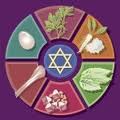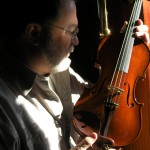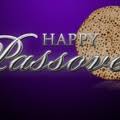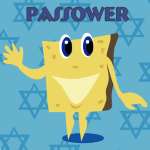 Let’s set some records straight. Exodus 13:3 simply tells the Israelites that they may not eat chamatz during Pesach (Passover). Chametz is leaven made from five grains known at the time: chitim (wheat), seorim (barley), kusmin (rice wheat), shibolet shual (millet, oats, or two-rowed barley), and shifon (spelt wheat or oat).
Let’s set some records straight. Exodus 13:3 simply tells the Israelites that they may not eat chamatz during Pesach (Passover). Chametz is leaven made from five grains known at the time: chitim (wheat), seorim (barley), kusmin (rice wheat), shibolet shual (millet, oats, or two-rowed barley), and shifon (spelt wheat or oat).
Torah tells us that Jews should not be eating chametz. That’s wheat, barley, rye, oats and spelt if they have been sitting in water for more than 18 minutes. Water exposure for longer than 18 minutes will result in leavening. Some grains are processed using water. If you want to eat oatmeal for breakfast, look for the designation “kosher for Pesach” or “kasher l’pesach” and you should be fine.
But what about kasha or quinoa or rice? What about corn, peas, lentils, and beans?
These items are classed as kitniyot which all Jews can have in the house during the hag (festival) but which Ashkenazi Jews do not eat.
Why? European rabbis may have ruled against eating kitniyot because they are often made into edible items that look like chametz (e.g. cornbread). Another explanation: These items were stored in the same sacks as five grains and rabbis were afraid the one would be contaminated by chametz from the other. And finally, the rabbis worried that if farmers alternated kityinot crops with forbidden chametz grains the two could get mixed together.
But in recent decades, rabbis have questioned Ashkenazi practice in this regard. In 1988, Rabbi David Golinkin noted that the many additional prohibitions observed by Ashkenazim were not that old in the grand scheme of Jewish history. Before the 13th century the Jews of Europe appear to have had no compunction whatsoever about eating kityinot during Pesach. Sephardi and Mizrachi Jews never joined their Ashkenazi brethren in expanding the list of prohibited foods.
Rabbi Golinken noted that the prohibitions detracted from the joy of the holiday by limiting the number of permitted foods. He added that prohibitions against eating kityinot caused exorbitant price rises, that they emphasized the insignificant at the expense of paying attention to the significant (chametz), and that they caused unnecessary divisions between Israel’s different ethnic groups.
Does it make sense to prohibit food items that were entirely unknown in Torah times? Can we imagine the Ancient Israelites worrying about whether they could eat soybeans and sweetcorn? These items were unknown to the medieval authorities some Ashkenazi rabbis claim to be following when they proscribe them from our Pesach diet.
It’s really this simple: Why insist on meaningless restrictions when Torah permits us to eat kityinot?
We don’t.
So if you see kasha or soy or rice at Temple Or Olam’s Passover seder, please be aware that our congregation cares about observing the festival as Torah asks us to. Joyfully. Sanely. Appropriately.
What you won’t see is chametz, because that is what Torah prohibits. No more. No less.
Enjoy the seder!








